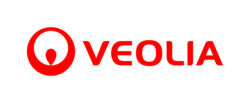Brescia wastewater treatment plantview supplier

Application:
Municipal
ZeeWeed
About Brescia wastewater treatment plant
Commissioned/installed date: 2002
Capacity range MLD: 20−50
Average daily flow: 42 MLD
Brescia is one of many well performing ZeeWeed municipal plants in the world − this plant has proven the quality of ZeeWeed membranes and their ability to perform for longer than 10 years. The plant has operated continuously since 2002.
Challenge
As effluent discharge requirements for the European Union became more stringent, ASM Brescia was forced to re-evaluate the performance of its three-line wastewater treatment plant, originally constructed in 1980. Meeting the new regulations with the existing conventional secondary clarifiers was found to be too difficult and an upgrade was deemed necessary.
Before the upgrade, all three lines consisted of primary clarification, biological oxidation, secondary clarification, and final chlorination. The raw water was processed through a fine screen and a grit and grease removal system, before flowing through the biological process.
Although an upgrade using conventional technology was considered, the installation would have required a very large footprint. With very limited available land to extend the plant footprint, ASM Brescia required a compact technology with which to retrofit a portion of the existing wastewater plant.
Solution
A division of the ASM group, known as Aprica Studi Engineering Company, performed a five-month study to solve the upgrade problem. Veolia Water Technologies & Solutions was selected to supply a ZeeWeed MBR (membrane bioreactor) system to replace one of the three existing activated sludge treatment lines, and was requested to operate as the main contractor. The new ZeeWeed MBR would replace 'Line B', as this was the oldest and most obsolete of the existing lines.
The ZeeWeed membrane fibre has a nominal pore size of 0.04 microns, which provides a physical barrier to biomass, bacteria and viruses, retaining them in the process tank. Without the need for chemicals, the ZeeWeed membrane can handle extreme variances in feedwater, and can operate in high MLSS concentrations of up to 15,000 mg/L.
The ZeeWeed MBR system can operate with the membranes directly in the bioreactor tank, which drastically reduces the required plant footprint by eliminating the need for secondary clarifiers. ASM Brescia used this extra land to install a nitrification/denitrification system, in order to meet the new government specifications for a Total Nitrogen < 15 mg/L. Even with this new nitrification/denitrification system in place, the entire upgrade was installed in virtually the same footprint as the previous 'Line B'. To further decrease capital costs, the existing oxidation tank was reused to house a portion of the denitrification process.
By upgrading only one of the existing process lines, the combined effluent from the entire plant is now able to meet and exceed the quality requested by EU regulations. With its increased capacity, the plant is able to handle the requirement of the growing city and treat the sewage from the neighboring suburbs. The plant upgrade has given ASM Brescia the ability to monitor local pollution more accurately.
Process Overview
The raw water, which consists of mostly municipal sewage and some industrial waste, first passes through a fine 0.08 inch (2 mm) screen to remove larger solids. After screening, the sewage then flows through a basin for both oil and grit removal. The influent then flows by gravity to an anoxic zone, where denitrification occurs.
Via gravity, the mixed liquor then moves to the aeration zone where nitrification occurs. The mixed liquor then flows to the ZeeWeed membrane filtration tanks. Filtration is achieved by drawing effluent through the surface of the hollow fibre membrane under a low-pressure suction of −1 to −8 psi (−6.9 to −55 kPa). Once drawn to the inside of the membrane fibre, treated water is conveyed to the main effluent discharge pipe.
The effluent from the plant is safely discharged into a local water supply, with the possibility of reusing the water for irrigation in the future.
Company summary
About this page
This page was last updated on 06 February 2023
Disclaimer
Information on this page may have been supplied by third parties. You are reminded to contact any third parties to confirm information is accurate, up to date and complete before acting upon it. TheMBRSite.com accepts no liability for information provided by third parties, actions taken on the basis of this information or information held on third-party websites.



